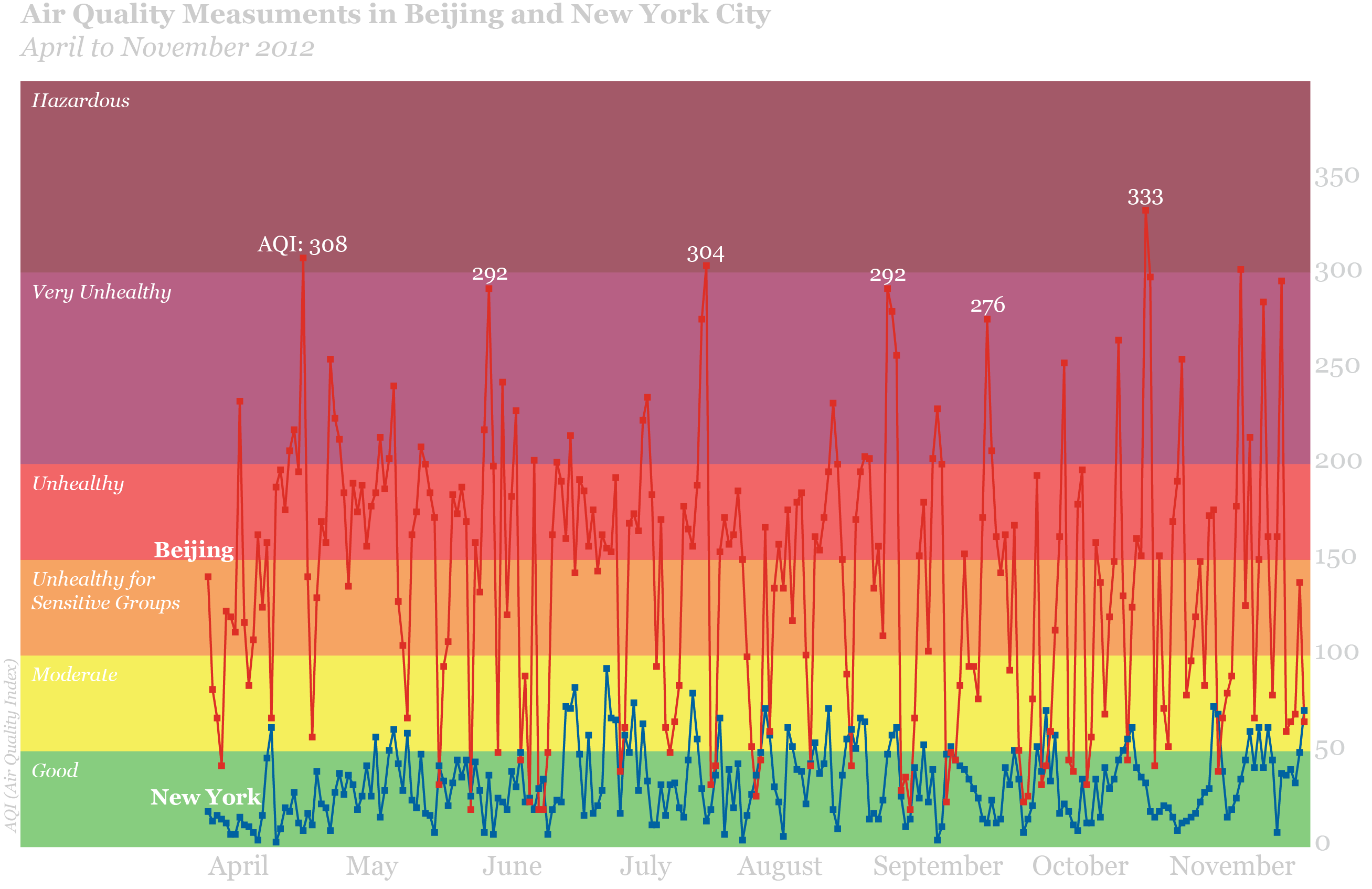China’s Air Pollution: The Tipping Point
Last November, Beijing saw a stretch of solidly clear skies and the Chinese media coined a phrase to describe them: APEC blue. After the diplomats and businesspeople gathered in China’s capital for the Asia Pacific Economic Cooperation forum dispersed, and the factories shut down ahead of the meeting came back online, the clean air held for a while, stretching into early December. But soon, the smog was back. Since 2011, frequent hazardous smog, topping 300 on the Air Quality Index (AQI), has plagued Beijing, often monthly, even weekly, and sometimes for several days in a row.
For the past eight years in Beijing, and four years in other Chinese cities, I have recorded an impression of the daily air quality by taking photographs from fixed points. I thought I had seen the worst smog a developing country had to offer, and then came the “Airpocalypse” of January 2014. Finally, in March 2014, the Chinese government declared an all-out “war against pollution.” For a few months, as my photo archive suggests, Beijing’s air quality appeared to improve. But this winter it is getting bad once again: January 15 saw an AQI measurement near 500.
The Beijing government has said it is possible to bring the city’s air down to healthy pollution levels by 2030. Such an accomplishment would remove tons of heavy metals—some carcinogenic—from the air above the capital’s more than 20 million residents. Cleaning up Beijing’s air would make the city attractive again to people arriving from all over the world, and it might stem the flight of expatriates who leave to escape the persistent, hacking “Beijing cough.”
Cleaning up the air could prove that Beijing deserves to be trusted when its leaders say they wish China to be considered an indispensable stakeholder in the broader fight against global climate change.
Check the air quality daily at ChinaAirDaily.com.




